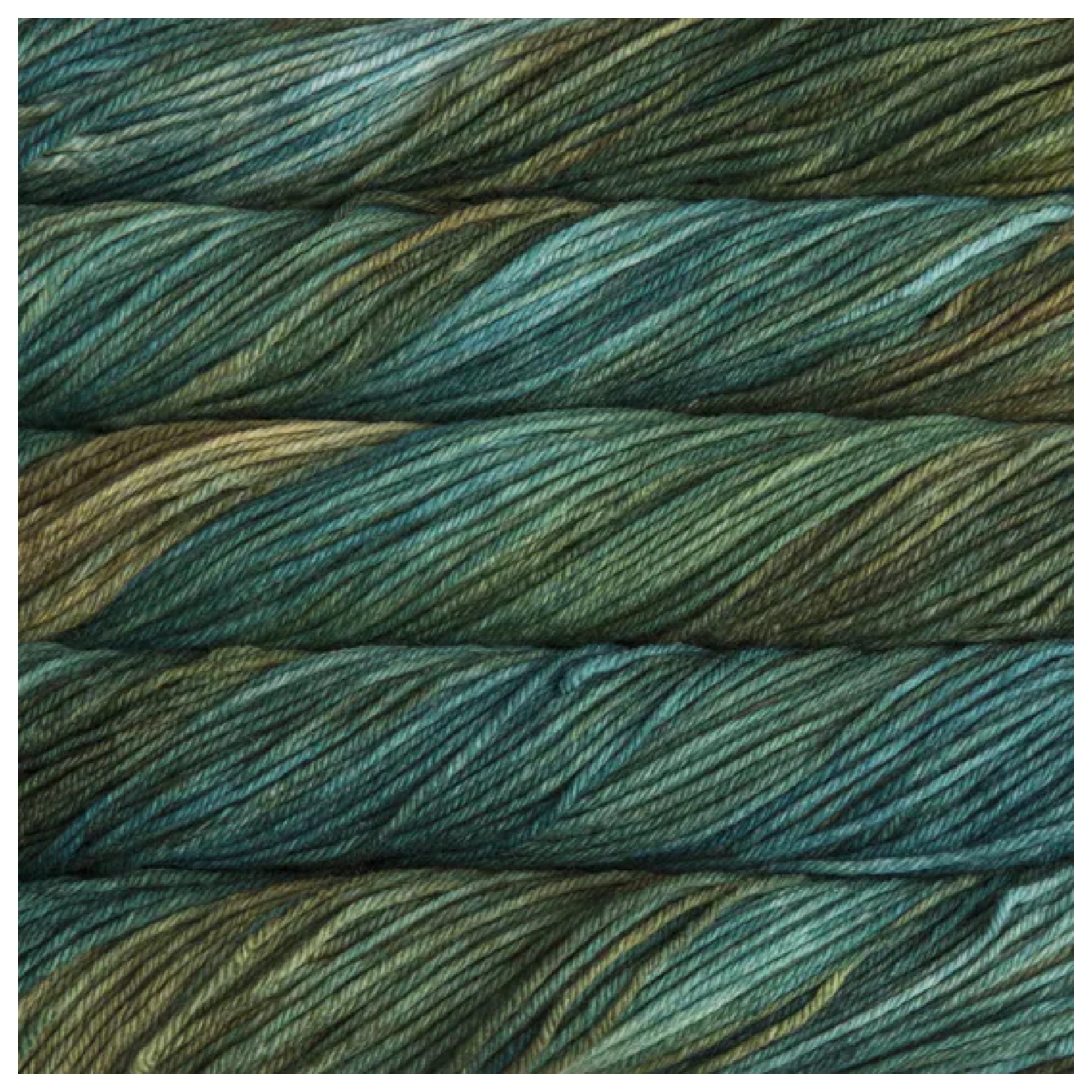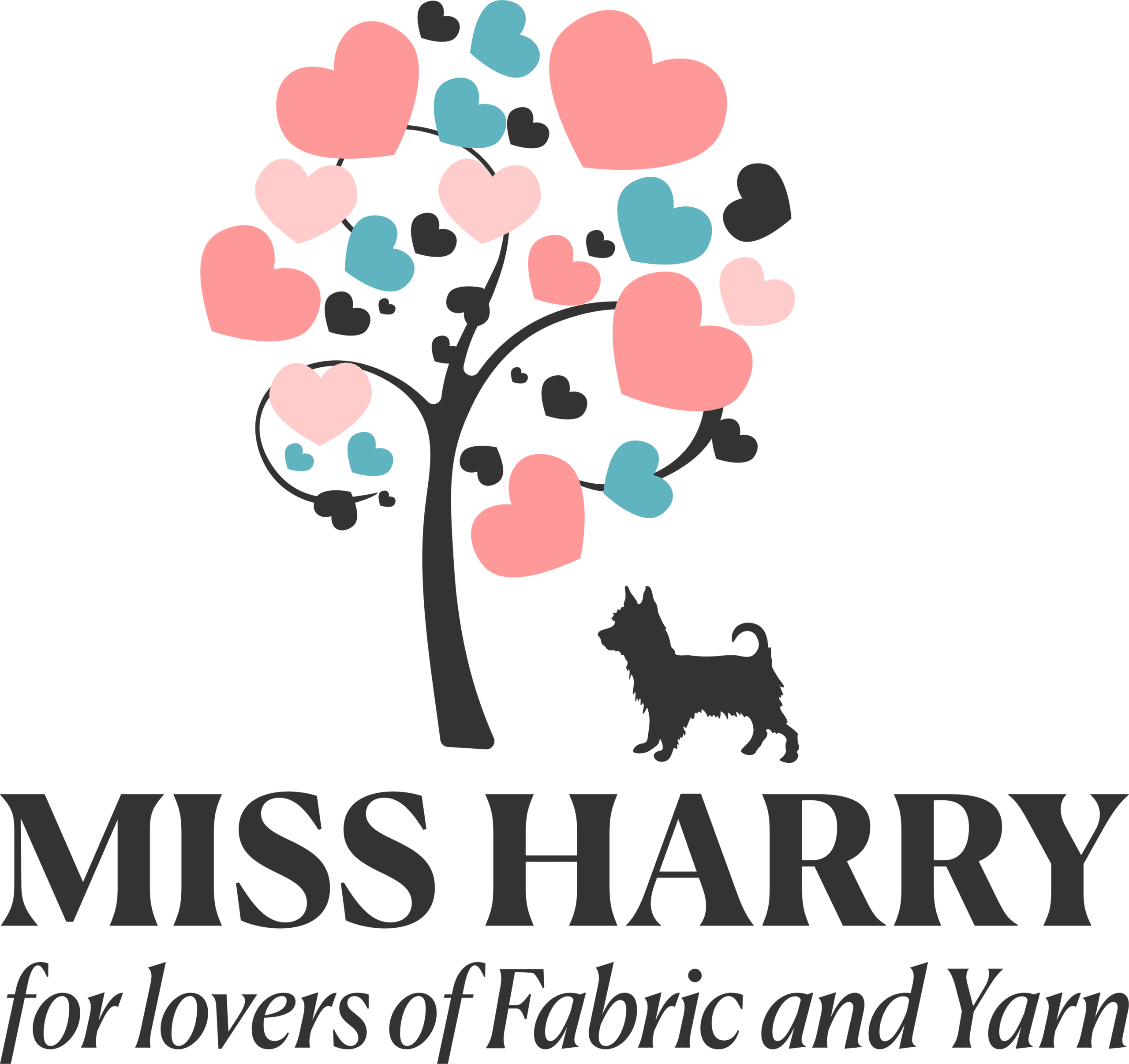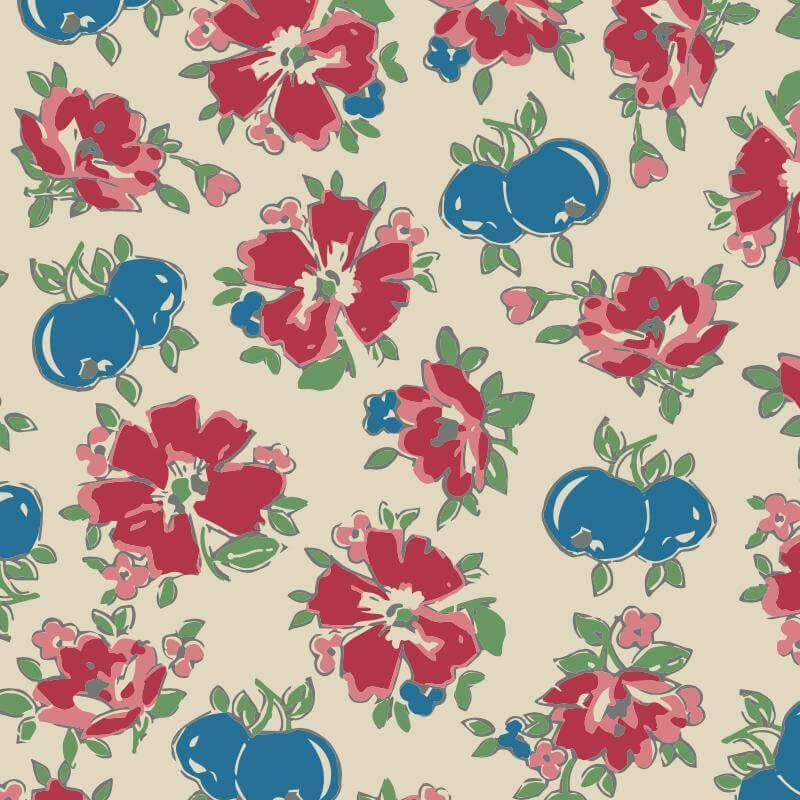
Malabrigo Rios – Fresco Y Seco is superwash, kettle dyed merino wool. Soft, strong, and washable, this 10 ply yarn is our workhorse! The plies help resist pilling and washability makes it fantastic for frequently-worn garments, housewares, and children and baby clothes. And like all our yarns, it’s super soft and great for next-to-the-skin wear! Spun from our premium superwash merino, it comes in an array of watercolour-multi, semi-solid, and variegated colourways. We carry many yarns from Malabrigo and you can see them all Here!
Great for: Accessories, garments, baby and kids items, housewares, toys, cables, textured stitches, colour-work.
Gauge: 18.0 to 22.0 sts = 4 inches
Needle Size: US 6 – 8 or 4 – 5mm
Hook Size: US I-9 to K-10/12 or 5.5-6.5 mm
Be sure to get enough Malabrigo Rios – Fresco Y Seco to complete your project since each bag is a different dye lot, and skeins may vary from bag to bag and in some cases the skeins may vary one from the other even within the same bag. To ensure random colour distribution, work from two balls of yarn at once, alternating a few rows from each ball.
Craft Yarn Council is a great website full of useful information including all the standard symbols for crochet and knitting and all the information on what all those symbols on your yarn tags mean, hook and needle conversion charts and more! They also have all the information on Yarn weights including WPI which is very useful if you lost your tag! The other useful website is Yarnsub – great advice on what you can substitute your yarn for in a pattern. Both websites are worth having in your favourites.
Miss Harry quilting patterns and sample quilts are designed and made by Lynne Edwards. Lynne has been teaching and designing quilts for more than 20 years and with many hours of patience and drinkies Lynne has managed to teach me how to quilt. All of our patterns are available in kit form as for many quilters fabric selection and colours can be quite daunting and even stressful!
Our crochet patterns are designed by me in my little studio in the Dandenong’s to suit the yarns we stock. I learnt to crochet only 4 or 5 years ago having being taught by textile artist Kaye Adolphson. In our Crochet patterns section you will find several of Kayes patterns available for purchase .
We stock a collection of quality fabrics for the quilter and crafter along with precut fabric bundles and project kits. We have a small studio in the Dandenong’s and are predominately online but we do visit several local quilt shows with our stock. Our fabric collection is a uniquely curated collection of colours and prints that Lynne and I love. Included in our collection are Liberty florals, 1930’s to 1950’s bright quirky fabrics and 1895 hand dyed batiks. Every fabric we purchase to sell online has been chosen with a quilt in mind for us to make or to make our dogs a dog bandanna!

Malabrigo Rios – Valentina is superwash, kettle dyed merino wool. Soft, strong, and washable, this 10 ply yarn is our workhorse! The plies help resist pilling and washability makes it fantastic for frequently-worn garments, housewares, and children and baby clothes. And like all our yarns, it’s super soft and great for next-to-the-skin wear! Spun from our premium superwash merino, it comes in an array of watercolour-multi, semi-solid, and variegated colourways. We carry many yarns from Malabrigo and you can see them all Here!
Great for: Accessories, garments, baby and kids items, housewares, toys, cables, textured stitches, colour-work.
Gauge: 18.0 to 22.0 sts = 4 inches
Needle Size: US 6 – 8 or 4 – 5mm
Hook Size: US I-9 to K-10/12 or 5.5-6.5 mm
Be sure to get enough Malabrigo Rios – Valentina to complete your project since each bag is a different dye lot, and skeins may vary from bag to bag and in some cases the skeins may vary one from the other even within the same bag. To ensure random colour distribution, work from two balls of yarn at once, alternating a few rows from each ball.
Craft Yarn Council is a great website full of useful information including all the standard symbols for crochet and knitting and all the information on what all those symbols on your yarn tags mean, hook and needle conversion charts and more! They also have all the information on Yarn weights including WPI which is very useful if you lost your tag! The other useful website is Yarnsub – great advice on what you can substitute your yarn for in a pattern. Both websites are worth having in your favourites.
After learning to crochet I soon discovered that not all yarn was the same. I could have the most beautiful looking yarn on my hook but if it didn’t feel right or was not soft enough I struggled to enjoy and complete the project. For me the feel, colour, fibre type and wash ability were all important factors in choosing yarn for the collection. We have sourced our beautiful quality yarns from around the world and have tested all yarns on many projects before giving them our tick of approval.
Whilst the feel is important I only recently discovered how important it is to know how the yarn is produced. Last year we were on holidays in the Flinders Ranges South Australia where we stayed on a local sheep station that produces merino wool. While there we went on a couple of station tours with the owner and being in love with wool I asked many questions about the process’s used for care of the sheep and production of the wool. After our stay I did a lot of reading about practices all over the world for treatment of animals and wool production. I’m all for using animals for us “humans” needs BUT to put an animal through the mulesing process that cause’s them pain for us to have pretty yarn is not something I could continue to support. At the bottom of this page I have written a little about the mulesing practices for those that want to read more as for some its quite distressing. With that foremost in my mind all yarn in our collection is sourced from producers that have ethical practices in place.
Mulesing
This is the practice of cutting away the folds of skin on the backside of the sheep to prevent Flystrike. This has become a contentious issue in Australian sheep farming as it is seen as cruel to inflict this painful procedure on sheep. Many farmers use anaesthetic’s and antibiotics but not all do and it’s difficult to find out who does and doesn’t. As with anything there are two sides to this story. Mulesing is done to prevent Flystrike. Flystrike is where blowflies lay their eggs in the warm moist folds of skin on the backside of the sheep and these then turn into maggots which burrow into the fleece of the animal and eat the skin from the inside. Obviously this is a debilitating painful condition for an affected animal and if left untreated it can cause death. Unfortunately Merino Sheep in Australia are especially susceptible to Flystrike because of the skin folds around their backsides.

Bettys Pantry fabrics are a selection of gorgeous reproduction prints. Beatrice has beautiful red flowers and blue fruits on a tan background.
Fabrics were designed by Dierdre Bond-Abel of Hat Creek Quilts.





